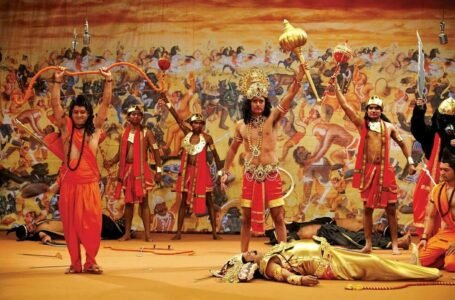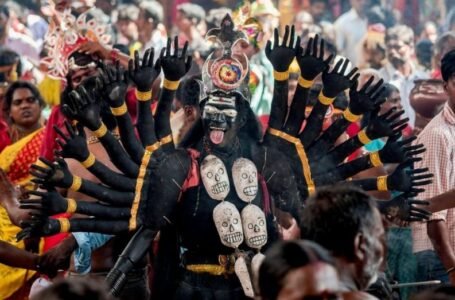Understanding the Backbone of India’s Defense: Infantry, Armoured, Artillery & Mechanised Divisions in the Indian Army

-Arushi Kastwar
India, with its extensive geography, agitated frontier, and changing security threats, depends on one of the world’s biggest and most professional armies. At the center of its defense is the Indian Army — a ground force that is an emblem of discipline, gallantry, and national sovereignty.
Though the Indian Army is a unified force, it has many specialized divisions which have specific roles in war, border defense, insurgency warfare, and strategic deterrence. Some of the most important components include:
Infantry Divisions
Armoured Corps
Artillery Regiments
Mechanised Infantry Units
In this blog, we deconstruct the functions, roles, and contemporary significance of these core divisions, showing you how they add to the strength of India’s military.
- Indian Infantry Divisions: The Ground Warriors
What Is the Infantry?
Infantry is the backbone of the Indian Army — the foot soldiers who are trained to fight on the frontline. These are the soldiers who occupy the frontlines, patrol borders, initiate assaults, and carry the toughest realities of war.
Role of Infantry in the Indian Army
Border Security and Surveillance: Infantry troops are deployed at LOC (Line of Control), LAC (Line of Actual Control), and international borders.
Mountain Warfare & High Altitude Operations: Infantrymen are trained in high-altitude war and survival with regiments such as the Kumaon, Gorkha Rifles, and Dogra Regiment.
Counterterrorism & Internal Security: From Northeast’s insurgency-affected regions to Kashmir, infantry is the key in surgical strikes, patrols, and operations such as Operation Rakshak.
Conventional Warfare: At the time of full-scale war, infantry conducts ground attacks, occupies terrain, and captures objectives.
Peacekeeping Missions: India’s infantry soldiers have been part of 50+ UN Peacekeeping missions, earning global respect.
Notable Infantry Regiments
Sikh Regiment
Jat Regiment
Rajputana Rifles
Garhwal Rifles
Assam Regiment
Why the Infantry Remains Indispensable
With the emergence of technology and distant warfare, infantry is yet to be replaced. Their flexibility, closeness to the enemy, and capacity to hold and control terrain makes them essential in peace and war.
- Indian Armoured Corps: The Steel Spearhead
What Is the Armoured Corps?
The Armoured Corps is the main tank force of India, comprising heavily mobile and armoured battle tanks. They are the mainstay of offensive actions, with shock action, speed, and firepower being their hallmark.
Role of Armoured Corps in Indian Army Operations
Breakthrough & Rapid Assaults: The Armoured Corps breaks through enemy lines in conventional war through sheer strength and momentum.
Strike Capability: Being part of India’s “Strike Corps,” these divisions are capable of conducting deep thrusts within enemy lines.
Desert Warfare: Particularly active along the Western border with Pakistan, where pancake-flat desert country is conducive to tank movements.
Deterrence: The visibility and capability of Indian tanks act as a deterrent to likely aggression.
Principal Battle Tanks in Service
Arjun Mk-1A – Local MBT with contemporary firepower
T-90 Bhishma – Russian origin, backbone of armored forces
T-72 Ajeya – Still in service, being upgraded
Major Armoured Regiments
16 Cavalry
63 Cavalry
18 Cavalry
20 Lancers
Modern Challenges and Modernization
India is constantly modernizing its Armoured Corps with state-of-the-art communications systems, thermal imaging sights, anti-drone technology, and precision-guided ammunition to guarantee dominance on the battlefield.
- Regiment of Artillery: The God of War
What Is the Artillery?
Artillery regiments provide long-range fire support, commonly referred to as the “God of War.” They are engaged in softening enemy positions prior to infantry advances or driving away massive enemy formations from distant distances.
Role of Artillery in Indian Military Operations
Fire Support in War: Fires shells, rockets, and missiles to destroy bunkers, tanks, and supply lines of the enemy.
Force Multiplier: Multiples the effectiveness of armoured and infantry operations through accurate and heavy barrages.
Counter-Bombardment: Conducts counter-battery fire to disable hostile artillery.
Strategic Deterrence: Indian artillery consists of missile regiments with Prithvi, BrahMos, and Pinaka systems.
Mountain Artillery: Light howitzers are specially employed in high-altitude areas such as Siachen and Tawang.
Artillery Systems Used
Dhanush Howitzer – Indigenously-developed 155mm gun
K9 Vajra-T – Tracked self-propelled gun
M777 Ultra-Light Howitzer – Suitable for mountain warfare
Pinaka MBRL – Multi-barrel rocket system
BrahMos Missile System – Supersonic cruise missile
Artillery Regiments of Note
1889 Medium Regiment
198 Rocket Regiment
276 Field Regiment
1999 Missile Regiment
Tech Integration & Smart Warfare
Indian Artillery is being modernized with radar systems (Swathi), drones, and AI-based fire control systems for smarter, faster, and more lethal responses.
- Mechanised Infantry: Speed Meets Precision
What Is Mechanised Infantry?
Mechanised Infantry reconciles the flexibility of infantry with the mobility and cover of armored vehicles. They fight in Infantry Combat Vehicles (ICVs), making them capable of engaging in coordination with tanks.
Role of Mechanised Infantry in Indian Defense
Mobile Infantry Warfare: Mechanised soldiers can be quickly mobilised over varied landscapes.
Support to Armoured Operations: They move in behind tanks into combat, seizing and holding ground following breakthroughs.
Flexibility in Combat Areas: Suitable for deserts, plains, and urban combat situations.
Quick Reaction Force (QRF): Positioned to react quickly to new dangers on the battlefield.
Primary Vehicles in Service
BMP-2 Sarath – Amphibious ICVs equipped with cannons, missiles, and troop transport features
Tata Kestrel (Kavach) – Under trials; advanced wheeled APC with modular features
DRDO Futuristic ICV – Under development, with improved armor and digital features
Mechanised Infantry Regiments
Mechanised Infantry Regiment (MIR) – Formed in 1979 as a separate arm
22 Mech Inf
11 Mech Inf
2 Mech Inf
Why Mechanised Infantry Is Indispensable
Modern wars are increasingly mobile, and mechanised forces enable rapid insertion, high survival rates, and diverse combat possibilities, making them essential in offensive as well as defensive roles.
- Comparative Roles: How These Divisions Operate Together
Combined Arms Doctrine
The Indian Army practices a Combined Arms strategy, i.e., all divisions work together in harmony for utmost battlefield effect.
In times of war or strategic maneuvers such as Operation Brasstacks or Yudh Abhyas, these divisions practice working as a team, with tanks advancing, gunners laying down fire, infantry taking up positions, and mechanised troops advancing in unison.
- Challenges & Modernization Ahead
Key Challenges
Terrain Diversity: India’s geography, from deserts to high-altitude, calls for utmost specialization.
Two-Front Threat: With live borders on the Western (Pakistan) and Northern (China) fronts, there has to be operational readiness 24/7.
Technology Gap: Contemporary war requires cyber-defense, AI-powered platforms, and network-centric warfare.
Modernization Aims (Indian Army Vision 2027+)
Upgrading all T-72 tanks to digital standard
Boosting mechanised forces with future-proof vehicles
Implementing automated artillery fire systems
Fitting infantry equipment with night vision, light armour, and intelligent communications kits
Including drones, loitering munitions, and robotic reconnaissance
Conclusion: Strength in Diversity, Unity in Defense
The Indian Army’s strength doesn’t reside in one division — it resides in the harmonized strength of infantry grit, armored ferocity, artillery destruction, and mechanised versatility. Together, they comprise a battle-hardened, future-proofed force that guards a billion aspirations and a proud Republic.
As India modernizes its army for battles tomorrow, it still operates in the tradition of duty, courage, and nation-first — that every soldier, tank, gun, and armored carrier performs not only as a machine but as part of a great legacy.
From the snow-capped mountains to the dunes of the desert, in peace and war, these divisions secure India safety, sovereignty, and power.


